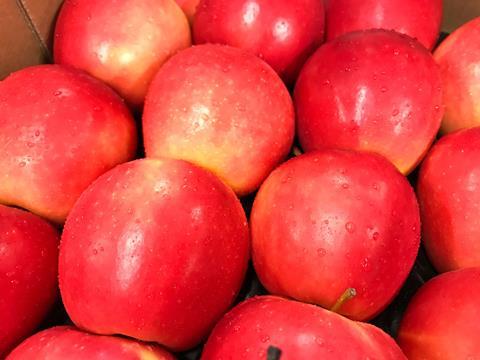
A striking new pink-coloured apple variety goes on sale in Europe for the first time this week.
Prem34, which has yet to be given a commercial brand name, will be available in selected Tesco stores in the UK, offering consumers sweet flavour, good crunch and a juicy, refreshing eating experience that its growers say make it one of the world’s most promising new apple varieties.
John Worth, technical manager for topfruit at Tesco, said the new apple was a potentially exciting prospect: “When we tested Prem34 we had positive feedback from consumers, who said they enjoyed the taste and eating experience,” he commented.
New Zealand supplier Golden Bay Fruit is leading production of Prem34, having already planted 50,000 trees to grow the variety in the Tasman Bay area of New Zealand’s South Island.
Tesco is understood to have agreed to trial Prem34 in the UK following a testing period described as “rigorous”, a move which potentially opens the door to the variety being sold in other markets where Tesco is active.
Golden Bay’s commercial manager Patrick Meikle told Eurofruit that growers in key producing countries believe it could become a major player in the apple category worldwide.
“Tesco has a keen interest in new varieties, and has given good support to the development of the market for this apple,” he explained. “Golden Bay Fruit has received very positive feedback from all markets, and customers around the globe are eagerly anticipating the increased commercial volumes that will come in subsequent seasons.”
While only a few pallets of Prem34 will be in the market this season, the volume of fruit available is expected to grow significantly over the coming years.
That expansion will be partly rooted outside New Zealand, through partnerships with growers in Europe, Australia, South Africa, Chile and the US that will ensure year-round supply.
'We are very excited by Prem34 and its global appeal, and we think that it will do very well in markets all around the world,” Meikle added. “Volumes this season will be limited and distributed to a few of the potential markets, but then volumes will ramp up significantly over the next two to three years.”



